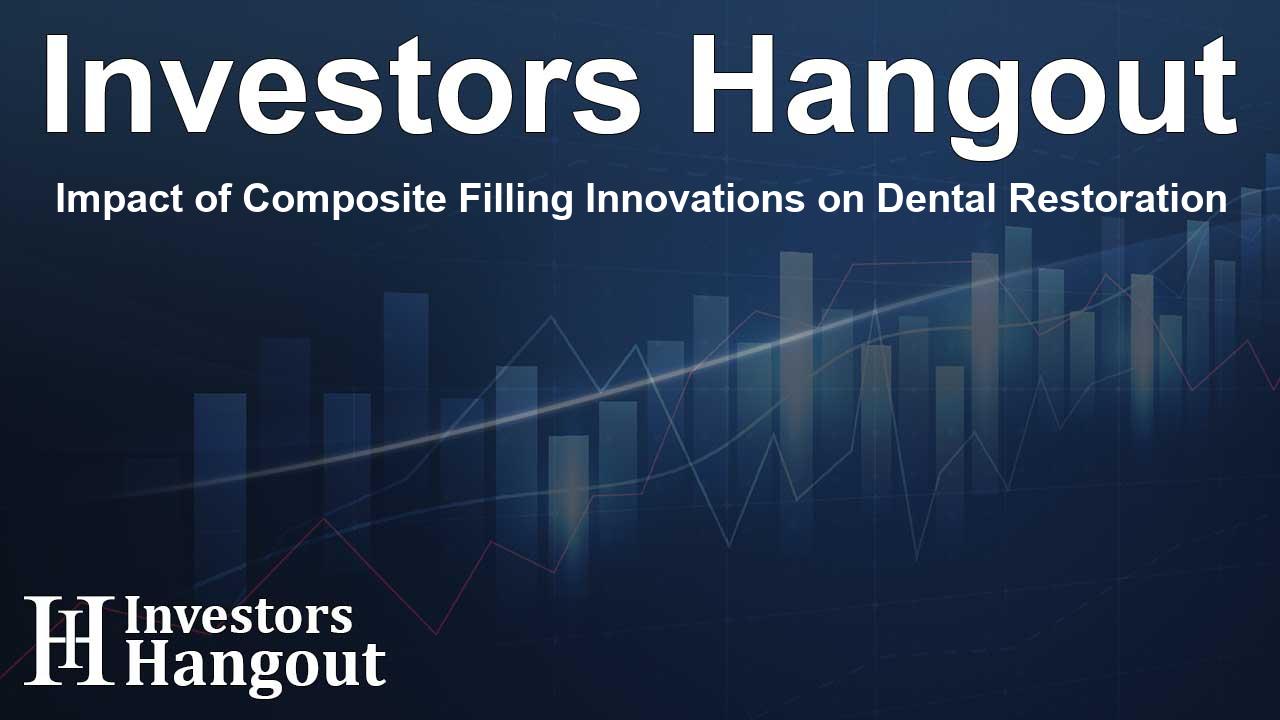Impact of Composite Filling Innovations on Dental Restoration

Exploring the Growth of the Composite Filling Market in Dental Restoration
The composite filling market in dental restoration is on a promising trajectory, projected to grow at an impressive rate of 6.3% annually, ultimately reaching a size of US$ 0.9 billion. This growth reflects changing consumer preferences, advancements in dental technology, and increased awareness regarding oral health.
Key Market Drivers
Several factors are fuelling the upward trend in the composite filling market. A significant driver is the aging population, which tends to experience increased dental issues that necessitate restorative treatments. Improved oral hygiene awareness worldwide has also resulted in higher rates of dental check-ups, leading to a rise in demand for composite fillings.
Demand for Aesthetics
Modern composite materials are also catering to aesthetic desires, offering various color shades that blend seamlessly with natural teeth. This capability to enhance dental appearance aligns with the growing trend of aesthetic dentistry, wherein patients seek not only functional but also visually pleasing outcomes.
Market Segmentation Insights
The composite filling market can be segmented into several categories: filler particle type, defect class type, end-user type, and geographical region. Understanding these segments helps in identifying the areas of highest demand and growth potential.
Filler Particle Type
The market's segmentation based on filler particle type includes nanohybrid, micro-hybrid, micro-filled, and nano-filled composites. Currently, nanohybrid composites are dominating the space due to their easy application and reduced chair time required during dental procedures, making them favorable among dental professionals.
Defect Class Type
In terms of defect classification, the market categorizes into Class I through Class VI types. Notably, Class I defects are seeing the fastest growth, propelled by increased cases resulting from dietary habits among younger populations. This presents opportunities for dental practitioners to address these needs effectively.
End-User Dynamics
Each segment of end-users—dental hospitals, clinics, and laboratories—plays a crucial role in the market. Among them, dental clinics are expected to maintain dominance due to an increasing number of specialists focusing on patient-centric care and treatment. Meanwhile, hospitals also hold a significant market portion.
Regional Growth Projections
Geographically, Europe is poised to be the largest market for dental composite fillings during the forecast period. The region's preference for composite materials over traditional amalgam types highlights a robust shift towards advanced dental solutions. Notable markets within Europe such as Germany, France, the UK, and Italy show promising growth prospects.
Asia-Pacific Potential
Conversely, the Asia-Pacific region is anticipated to exhibit the highest growth rates, driven by populous countries like India and China, where a significant shift from amalgam to composite fillings is underway. This transition is indicative of an evolving dental landscape that resonates with contemporary treatment preferences.
Top Players in the Market
The competitive landscape within the composite filling market is characterized by the presence of key players engaging in strategic developments to secure their market position. Major contributors include:
- Dentsply Sirona Inc.
- 3M Company
- Ivoclar Vivadent Inc.
- Envista Holdings Corporation
- Coltene Holding AG
- GC Corporation
- Shofu Global
- BISCO Inc.
- Voco Dental
Conclusion and Future Insights
As we look towards the future, the composite filling market is set to embrace innovations that enhance both functionality and aesthetics in dental restorations. With a steadily growing market size and endless possibilities for technological advancements, stakeholders in the dental industry stand poised to capitalize on emerging trends.
Frequently Asked Questions
What is the projected market size for composite fillings by 2030?
The composite filling market is expected to reach a size of US$ 0.9 billion by 2030.
What factors are driving the growth of the composite filling market?
The growth is primarily driven by an aging population, increased awareness of oral hygiene, and a desire for aesthetically pleasing dental restorations.
Which type of composite filling is currently dominating the market?
Nanohybrid composites are leading the market due to their ease of application and reduced chair time.
What regions are expected to show the most growth in this market?
Europe is expected to be the largest market, while Asia-Pacific is anticipated to show the highest growth rate.
Who are the major players in the composite filling market?
Key players include Dentsply Sirona Inc., 3M Company, and Ivoclar Vivadent Inc., among others.
About Investors Hangout
Investors Hangout is a leading online stock forum for financial discussion and learning, offering a wide range of free tools and resources. It draws in traders of all levels, who exchange market knowledge, investigate trading tactics, and keep an eye on industry developments in real time. Featuring financial articles, stock message boards, quotes, charts, company profiles, and live news updates. Through cooperative learning and a wealth of informational resources, it helps users from novices creating their first portfolios to experts honing their techniques. Join Investors Hangout today: https://investorshangout.com/
Disclaimer: The content of this article is solely for general informational purposes only; it does not represent legal, financial, or investment advice. Investors Hangout does not offer financial advice; the author is not a licensed financial advisor. Consult a qualified advisor before making any financial or investment decisions based on this article. The author's interpretation of publicly available data shapes the opinions presented here; as a result, they should not be taken as advice to purchase, sell, or hold any securities mentioned or any other investments. The author does not guarantee the accuracy, completeness, or timeliness of any material, providing it "as is." Information and market conditions may change; past performance is not indicative of future outcomes. If any of the material offered here is inaccurate, please contact us for corrections.